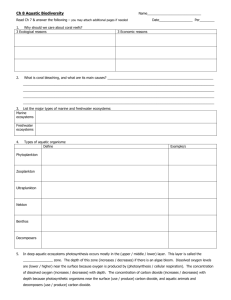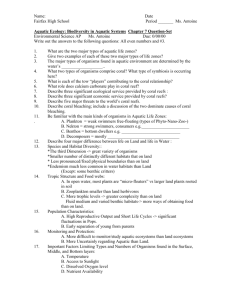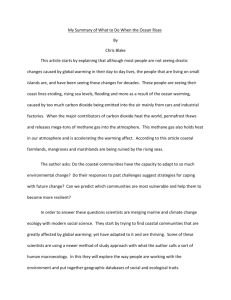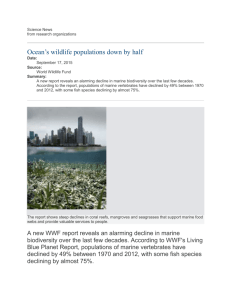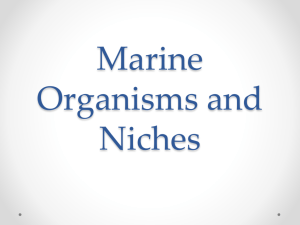5-1 ch8
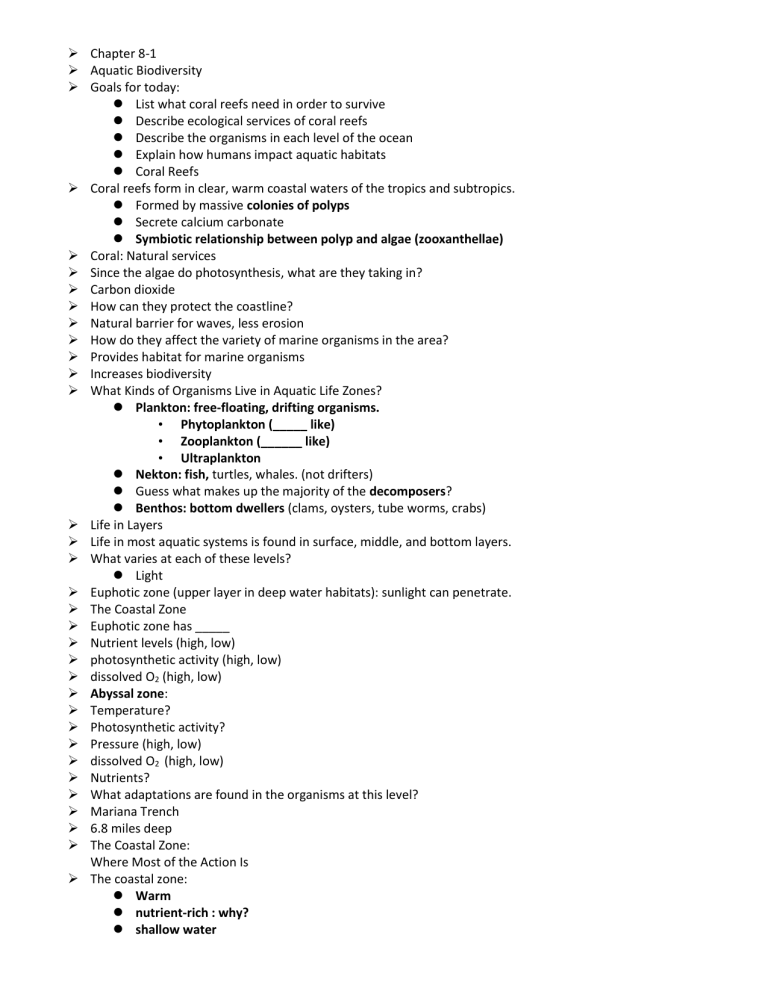
Chapter 8-1
Aquatic Biodiversity
Goals for today:
List what coral reefs need in order to survive
Describe ecological services of coral reefs
Describe the organisms in each level of the ocean
Explain how humans impact aquatic habitats
Coral Reefs
Coral reefs form in clear, warm coastal waters of the tropics and subtropics.
Formed by massive colonies of polyps
Secrete calcium carbonate
Symbiotic relationship between polyp and algae (zooxanthellae)
Coral: Natural services
Since the algae do photosynthesis, what are they taking in?
Carbon dioxide
How can they protect the coastline?
Natural barrier for waves, less erosion
How do they affect the variety of marine organisms in the area?
Provides habitat for marine organisms
Increases biodiversity
What Kinds of Organisms Live in Aquatic Life Zones?
Plankton: free-floating, drifting organisms.
• Phytoplankton (_____ like)
• Zooplankton (______ like)
• Ultraplankton
Nekton: fish, turtles, whales. (not drifters)
Guess what makes up the majority of the decomposers?
Benthos: bottom dwellers (clams, oysters, tube worms, crabs)
Life in Layers
Life in most aquatic systems is found in surface, middle, and bottom layers.
What varies at each of these levels?
Light
Euphotic zone (upper layer in deep water habitats): sunlight can penetrate.
The Coastal Zone
Euphotic zone has _____
Nutrient levels (high, low)
photosynthetic activity (high, low)
dissolved O
2
(high, low)
Abyssal zone:
Temperature?
Photosynthetic activity?
Pressure (high, low)
dissolved O
2
(high, low)
Nutrients?
What adaptations are found in the organisms at this level?
Mariana Trench
6.8 miles deep
The Coastal Zone:
Where Most of the Action Is
The coastal zone:
Warm
nutrient-rich : why?
shallow water
The coastal zone makes up less than 10% of the world’s ocean area but contains 90% of all marine species.
So the open ocean contains ____% of the world’s ocean area but only ____% of the marine species.
Check for Understanding:
1. Thriving coral reefs require _____
2. Ocean area above the continental shelf is called _____.
3. Open ocean makes up ____% of the surface area of the ocean and has ____% of the plant and animal life.
4. If you catch a swordfish, you would classify it as a member of the _____.
Ch8 CW/Ch4 CG due next Friday!



